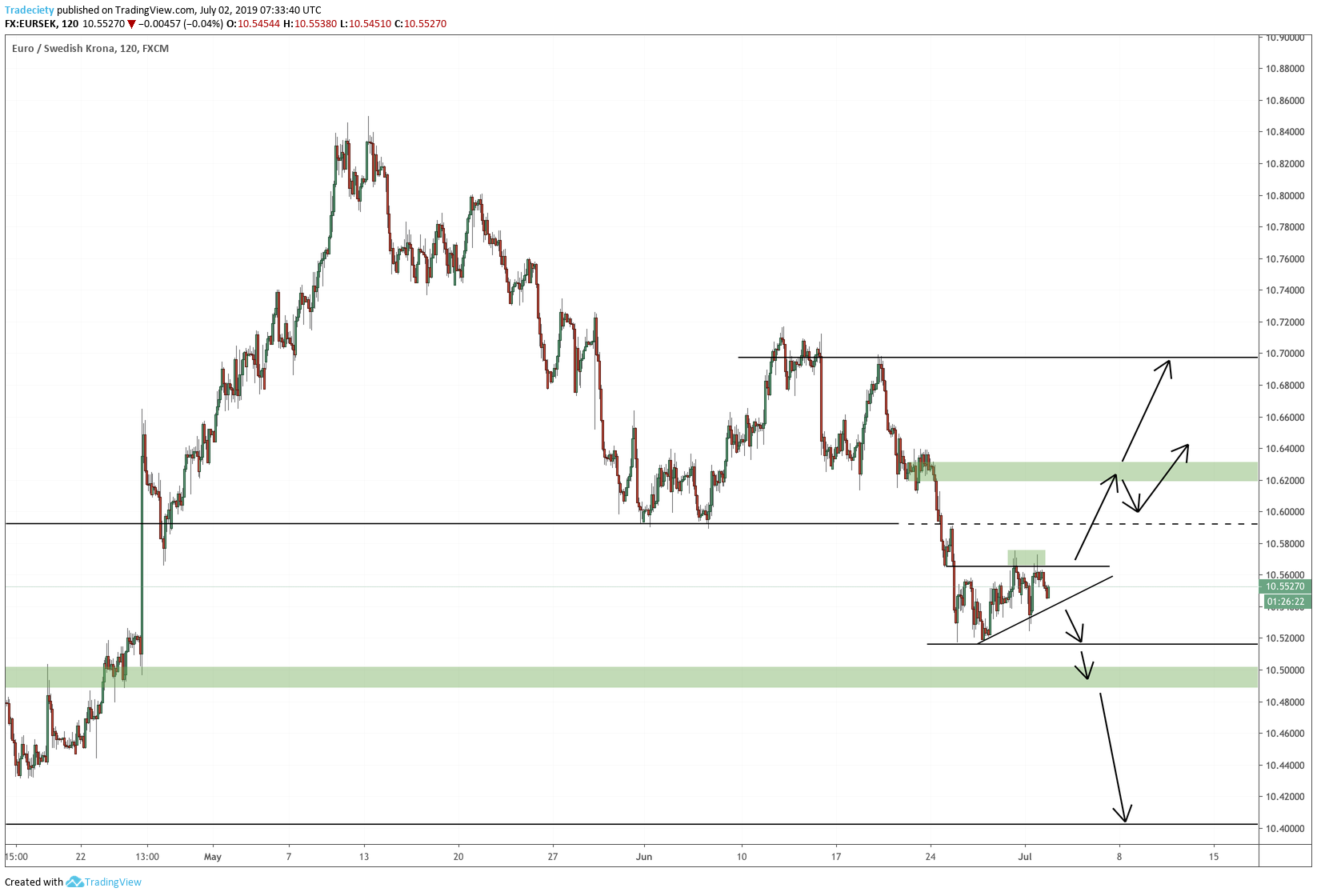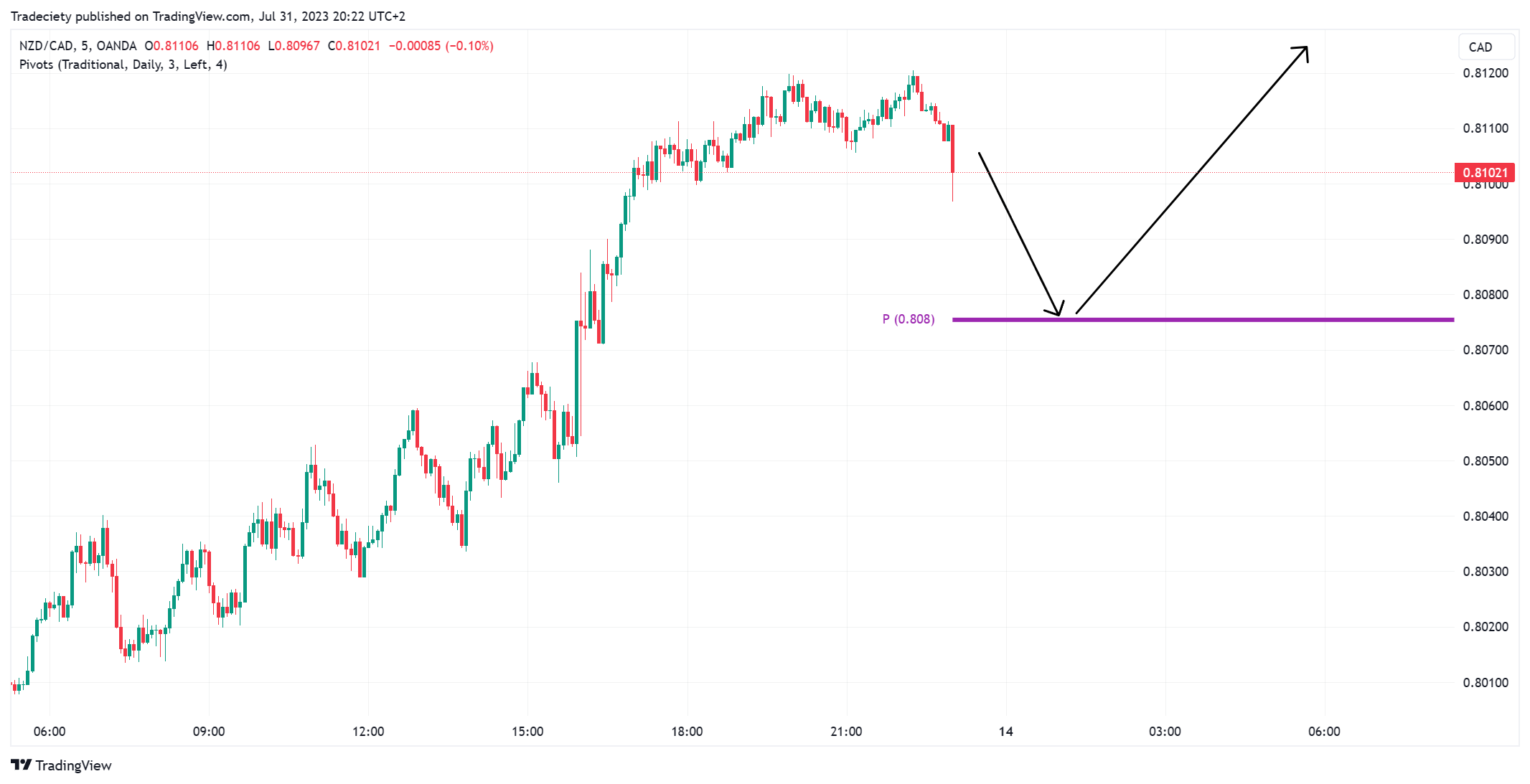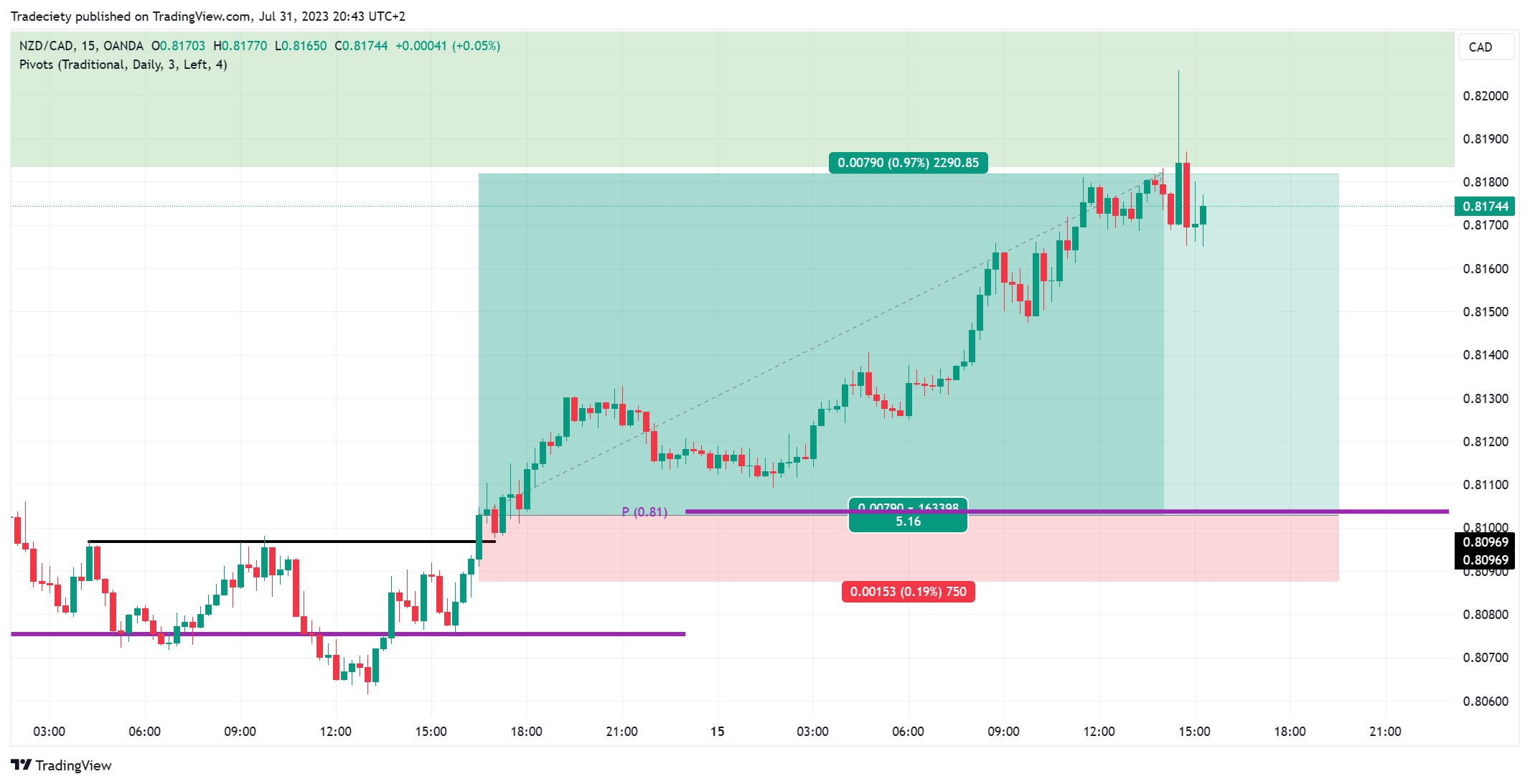3 min read
Scientist Discovered Why Most Traders Lose Money – 24 Surprising Statistics
“95% of all traders fail” is the most commonly used trading related statistic around the internet. But no research paper exists that proves this...

Do you sometimes feel lost in your trading and miss the best trading opportunities? A lot of traders constantly jump around timeframes, hunt for signals, and chase the price and end up being too late for good trades.
Such a reactive trading approach not only drains your energy but also frequently leads to emotionally driven trading mistakes such as revenge trading, price chasing, and overtrading. Reactive traders often reach the end of a trading week feeling exhausted and disheartened, having failed to realize the trading performance they aspired to.
This contrasts with proactive trading, where traders anticipate price movements based on solid analysis and place their trades in the right context consistently. Successful traders typically plan their trading session in advance and then simply execute based on their plan. This strategy is less taxing and usually results in more consistent results.
To transition into a more proactive trader, consider utilizing a trading plan. By adhering to a trading plan, you can maintain discipline, minimize impulsive decisions, and align your trading decisions with the overall market environment, thus enabling a more structured and objective approach to trading.
When you ask traders about their trading strategy, most will just tell you about how they find trade entries, and which signals they use to define an entry. And although picking the right entry price is important, it is far from being sufficient when it comes to a well-rounded trading strategy.
To create a complete trading strategy, traders need to define the overall strategy premise, set rules for stop loss and target placement, be clear about how to manage their trades and establish a consistent risk management approach.
The goal of creating a complete trading strategy is to bring more consistency into one’s trading. Consistency in your trading decisions leads to consistency in trading results.
A trading plan is built around your trading strategy, and the trading plan guides your decision-making throughout the day, optimizing your trading.
Let's examine the different components of a trading plan and understand how it can optimize your trading behavior and cultivate a stress-free trading environment.
While there are many variations in creating trading plans, the framework below should be suitable for most traders.
Typically, the price analysis starts on the higher timeframe to get an overall idea of the general chart context and determine the trend environment.
Many traders choose the Daily timeframe as their higher timeframe. The Daily timeframe is a suitable option as a higher timeframe for day traders, but it can also be used for traders entering trades on the 1H or 30min, which are traditionally not considered day trading timeframes.
On the higher timeframe, you identify the overall trend direction. This helps with trade selection because trading into the trend direction of the higher timeframe is generally considered the better trading approach.
Support and resistance levels from the Daily timeframe carry more weight. Therefore, traders should draw their price levels on their higher timeframes first before going to the lower timeframe. Looking for important round numbers and drawing previous supply and demand zones can also be done on the Daily timeframe.
The screenshot of the Daily timeframe below shows the price in a current uptrend. Above the price is a resistance level and a supply zone. Below the current price, we can identify two important support levels and the round number level at 0.8000.
The trend analysis suggests that looking for bullish trading opportunities on the lower timeframe would fit better into the overall trend context. Bearish trades would not make sense in the current higher timeframe situation. The higher timeframe trend analysis acts as a first filter for the trade direction.
Bullish traders need to be aware of the resistance levels at the top; such levels could be used as target levels for potential bullish trading opportunities that a trader may find on the lower timeframes.
Although the higher timeframe suggests an overall bullish trend environment, jumping into long trades without performing a lower timeframe analysis is typically not the recommended approach.
On the lower timeframe, traders look for specific entry criteria and create a trading plan around their chosen strategy rules. There is a sheer endless variety of trading strategies a trader can choose from. This article does not have the goal of promoting a specific trading strategy, but to show the general approach of a top-down trading plan technique.
For this article, we can choose a common pullback trend-following system. And instead of immediately executing a long trade based on the Daily timeframe analysis, a trader waits for the price to provide a better entry price by moving lower.
The screenshot below shows the 5-minute timeframe. Instead of chasing the bullish trend on the Daily timeframe, the pullback trader waits for the price to move back to the Daily Pivot point (purple line) and shows a chart pattern that can be used for breakout trades.

Trading plans typically follow the if-then format. The “if” part describes a specific event on the price chart that the trader is waiting for and the “then” part describes the action that the trader is going to perform in response to it.
In this example, the if-then trading plan is as follows: if the price moves into the Daily Pivot point and then provides a chart pattern, I will take a long entry trade after a pattern breakout.
The screenshot below shows that the if-then trading plan scenario is unfolding as anticipated. At this point, the price is generating a trade entry signal.
Now, the trader must follow the trading plan rules for stop loss and take profit placement. Most traders spend all their time and energy obsessing about the perfect entry but neglect other parts of their trading strategy.
Stop loss and target placement are very important aspects of a well-rounded trading strategy. Your stop and target directly impact your winrate and the holding time of your trades. Both are vital metrics for a trading strategy.
Although it is not the goal of the article to explain the trade parameter relationship, a short excursion might be helpful at this point: The farther the stop loss from the entry, the harder it is for the price to reach the stop loss level. A closer stop loss, on the other hand, is easier to reach for the price and, therefore, results in a lower winrate. The relationship between take profit placement and winrate is the same: The farther your take profit order is placed away from the entry, the less likely it is for the price to reach the target. At the same time, the holding time of your trades will also go up. The closer the take profit to your entry, the more likely it is for the price to get there, and the shorter the holding time.
The most important aspect when it comes to stop loss and take profit placement is that the trader follows a consistent approach and applies the same rules to each trade. Varying rules from trade to trade will create a lot of inconsistencies in your trading and lead to noise in your trading results. Ideally, all trades should follow the same trading rules.
When taking the trade entry, the position size calculation must be done as well. The common mistake here is that a trader will choose the same contract size for all trades. This convenient shortcut can lead to dramatic differences in relative position size. Let me explain.
In the Forex, Crypto, or Futures market, different instruments have different point values. In Forex, differences in currency values also impact position-sizing decisions. A trader who uses the same absolute lot or contract number for all trades gives different trades different weights. The higher the point value or the more expensive the currency, the fewer contracts the trader has to buy/sell in order to achieve the same risk level.
Typically, traders should choose a percentage-based risk level for their trades. Most trading books suggest a position size per trade of somewhere between 0.5% and 2% per trade. This means that with a position size of 1% on a $10.000 trading account, a loss should not exceed $100.
This sounds more complicated than it is and calculating the right position size is straightforward: In order to calculate the correct position size for the trade, all the trader needs is the distance between the entry price and the stop loss level. A quick Google search for position size calculators will provide dozens of great online calculators. A good calculator is the one from BabyPips: Position Size Calculator - BabyPips.com
A few years ago, I also recorded a step-by-step video on how to do position sizing the right way: Position Size in MetaTrader 4 - get it RIGHT! - YouTube
There is one important takeaway when it comes to position sizing rules in your trading plan:
You should choose a percentage risk level that you apply to all trades going forward. Whatever this number is for you, you must use this risk level for all trades. The more you deviate from your risk level, the more noise and inconsistencies you have in your trading results.
The screenshot below shows the final outcome. The price did move higher, back into the Daily supply zone that we identified at the beginning of this article.

When it comes to exit strategies, traders can choose between different options, depending on the overall trading approach:
As already mentioned multiple times during this article, picking one specific exit strategy rule and then applying it consistently across all trades is the key. The goal of a trading plan is to standardize decision-making which can have many benefits as we are going to explore further below in the next section.
A detailed trading plan prepares you for all possible market scenarios. By thinking in advance about what you'll do in different situations, you can reduce the uncertainty and anxiety that often come with trading. Instead of being caught off guard by market movements, you'll have a clear course of action to follow, helping to keep your emotions in check.
Consistency is a key element of successful trading. A trading plan helps to ensure that your trading is consistent, as it dictates that you follow the same steps and make decisions based on predefined criteria. This avoids impulsive, random, or inconsistent trading behavior, all of which can lead to unpredictable results.
A well-executed trading plan improves your decision-making process by setting out clear rules for trade entries, exits, and risk management. By adhering to these rules, you're less likely to overtrade, chase the market, or risk too much on any one trade. This systematic approach to decision-making can significantly improve your risk management and overall trading behavior.
By setting out your trading strategy in a plan, you can minimize emotional responses to market events. Emotions can often lead to poor trading decisions, such as revenge trading after a loss or becoming overly confident after a win. A trading plan helps to keep your emotions in check and encourages rational decision-making.
Finally, a well-executed trading plan may help improve your trading performance over time. By consistently following your plan, you'll be able to objectively evaluate your trading performance and identify areas for improvement in your trading journal. This continuous improvement process is crucial for long-term success in trading.
In conclusion, a trading plan is an essential tool for any serious trader. It provides a clear roadmap for your trading activities, helping you to maintain discipline, reduce impulsive decisions, and align your trading decisions with the overall market environment. It involves defining your overall strategy, setting rules for entries and exits, managing your trades, and establishing a consistent risk management approach.
A trading plan typically includes analysis of the overall chart context, identification of trading setups, the definition of trade parameters such as stop loss and targets, setting risk levels for each trade, and pre-defining entry and exit points. The benefits of such a plan include better preparation, increased consistency in trading, improved decision-making and risk management, elimination of emotional responses, and improved trading performance over time.
By consistently applying your trading plan, you'll be well on your way to becoming a more disciplined, focused, and successful trader. Remember, the goal of a trading plan is not to predict market movements but rather to provide a framework for making sound trading decisions.
Happy trading!

3 min read
“95% of all traders fail” is the most commonly used trading related statistic around the internet. But no research paper exists that proves this...

3 min read
Trendlines can be great trading tools if used correctly and in this post, I am going to share three powerful trendline strategies with you.

3 min read
Choosing the right trading journal is essential for traders wanting to analyze performance, refine strategies, and improve consistency. In this...